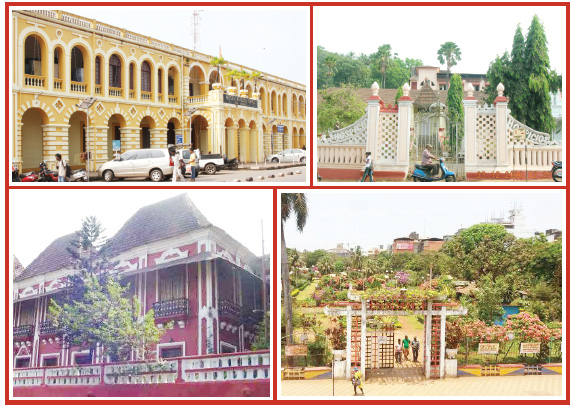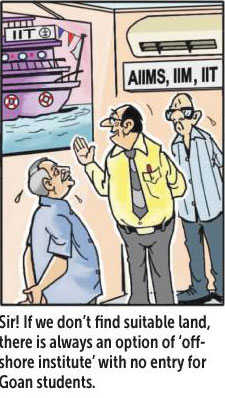18 Oct 2017 | 05:06am IST
Are Margao’s heritage precincts decaying?
The commercial capital of Goa has lot of heritage sites to promote tourism, but citizens demand infrastructure to be in its place while others feel that Madganvkars don’t open their doors to tourism
When questioned as to how does Vijai Sardesai as TCP Minister and Fatorda MLA plan to get revenue if his proposed plan of a Fatorda Municipality goes through, he was quick to add that Margao and Fatorda’s heritage can fetch it huge revenues through tourism especially organising heritage walks and revisiting many historical happenings within the commercial capital.
Margao in history has the site of the Margao massacre where 23 people died, the Abade Faria Road that has massive heritage homes, more heritage homes along the Holy Spirit Church, the 400-year-old Holy Spirit Church itself, the Pandava Caves at Aquem, the spring at Zoriwaddo, and the few heritage homes in Borda and Fatorda, all this that has Margao the potential to be a Fontainhas, Campal or even more but Margao is just a passing town for a tourist who go from Palolem to Anjuna or is just a stopover for a station for the tourist who come to live between Benaulim and Mobor and not really a tourist destination of any sorts.
He also said that the Lake Project near Fatorda, the Cultural Avenue of Ravindra Bhavan Road, the Heritage Walk from Old Market and several other places are on the anvil and will take shape soon.
But people from Margao and Fatorda have demanded that the infrastructure of transport, roads, illumination and other factors need to be put in place first before any plans of development are executed.
“Many years ago, UNDP had voted South Goa’s coastline from Zuarinagar to Mobor as one of the world’s best and top ten coastlines. Also Goa’s tourism history dates back from the hippie culture in the north of Goa and then we talk of tourism through luxury hotels in Sinquerim, Panjim, Canacona but Margao has never really been in the tourism map of Goa and seems to stay that way,” explains noted historian Valmiki Faleiro. He also feels the failure of a road like Goa’s first CM Babashaheb Bandodkar wanted to build to connect all of South Goa’s beaches just 1 km from the beach failed and hence there has been less focus on tourism here. But Armando Gonsalves of Goa Forgiving feels differently, he thinks that the people of Margao are not open to opening their homes and properties to tourism and tourist related activities or opening their amazing heritage to home stays and that is the key reason for tourism to take a back seat in the commercial capital.
While event planners and musicians, including Clairo Fernandes, who plays in a band tells us that Margao residents are most often from the coastal villages of Margao and prefer to go down south for gigs along the coast while Margao is a business town for serious activity of the day and hence it has no space for tourism. While many others feel the municipality’s failure to maintain heritage structures and spaces and the whole concrete constructions besides the focus on only tiatr as a performance medium took away all the tourism aspects of the commercial capital
“Margao has failed as a tourist destination as it has never been a well planned city and the extra real estate developments that have taken place have only placed a strain on the city's ability to control the issues it's already stressed with such as traffic control, parking and easy commute for tourists. Best comparative would be look at Panjim,” says Cassius Martins, owner of Martin’s Restaurant, Margao.
“Even though it faces the same issue as Margao like parking and traffic, it has the advantage of possessing natural resources such as river and beach accessible directly from the city. So there is sizable movement of tourists in the city who use jetty cruises, yachting, etc. While in the case of Margao, most tourists stay on the beaches that are away from the city and don’t have an incentive to travel to the city with taxi costs also going against it,” Cassius added.
Touching on city planning while comparing the two cities, Panjim has a well laid shopping district via 18th June Road where tourists and shoppers can conveniently walk along a paved walking access while in Margao, shoppers on the shopping routes via Pimpod Katta and Gandhi Market have to make their way through the same public road used by vehicular traffic, Cassius opines.

